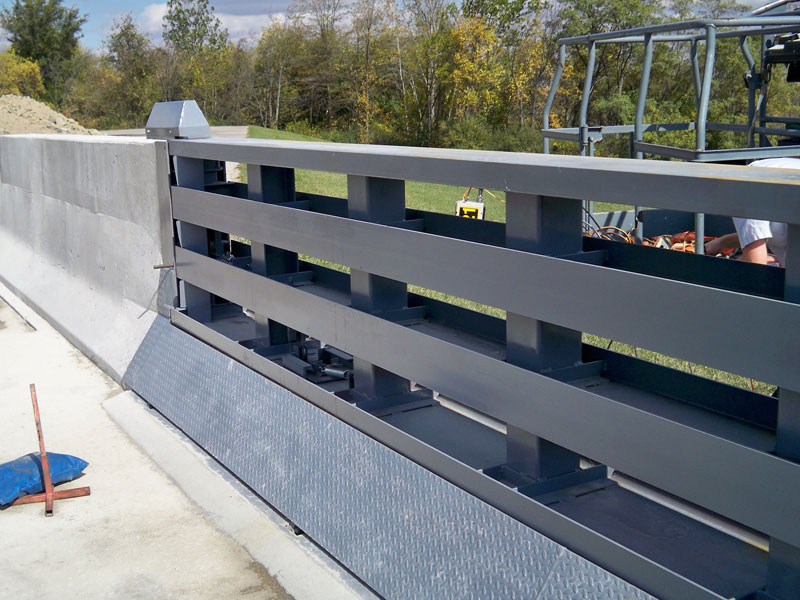What Is a Median Responder Gate (MRG)?
Emergency median crossovers connect opposing travel lanes of multi-lane highways. These crossovers allow first responders, law enforcement, and maintenance personnel to access opposing roadway lanes without having to travel long distances to reach the next available exit, interchange, or U-turn.
The US interstate system was initially designed with an interchange or emergency crossover point approximately every 2.5 miles. However, as interstate highways widen, medians narrow and it becomes increasingly necessary to separate opposing traffic by concrete barrier walls rather than grass or median cable. These concrete barriers usually eliminate existing emergency crossovers, lengthening response time for first responders, thereby increasing public safety risk. Hundreds of originally installed emergency crossovers have been eliminated.
Median responder gates (MRGs) reestablish emergency median crossovers eliminated by the construction of concrete barriers. MRGs are fast-acting gates that allow emergency responders to quickly cross concrete median barriers, eliminating miles of additional travel and drastically reducing the time required to reach injured persons. MRGs also enable highway officials to easily reroute traffic. When closed, MRGs prevent illegal U-turns and reestablish the integrity of the concrete barrier walls. Illegal U-turns have been shown to increase public safety risk as well.
First responders and other authorized personnel activate MRGs using handheld wireless transmitters. When emergency personnel move within approximately 300 feet of the MRG, they can press a transmitter button to initiate the opening process. After driving through the gate, personnel also use the transmitter to close the MRG. The responder gate opens in approximately 10 seconds and closes in approximately 15 seconds, thus creating less travel time, reducing precious life-saving minutes needed to reach, treat, and transport casualties.
In an effort to find a solution to assist responders, some state departments of transportation provide openings through concrete median barrier by “staggering” the barrier walls or removing a section of wall and protecting the wall ends with crash cushions. These designs also create an unsafe situation by inviting dangerous illegal U-turns through a narrow median into unsuspecting high-speed traffic. The MRG, in its normally raised position, does not allow illegal U-turns. Wrong-way drivers cause just 3 percent of divided highway crashes, according to the National Transportation Safety Board, but are 100 times more likely to be fatal.


